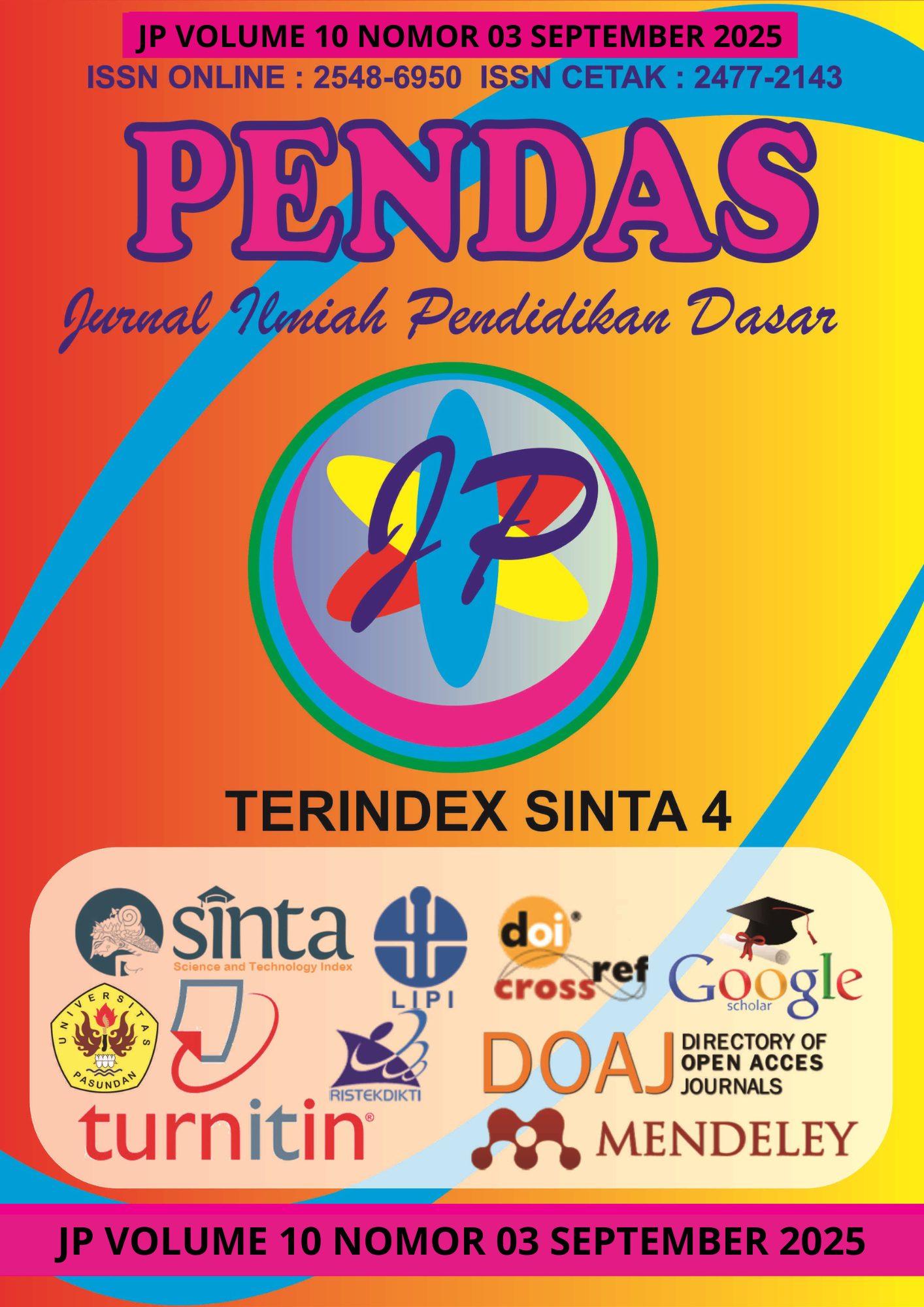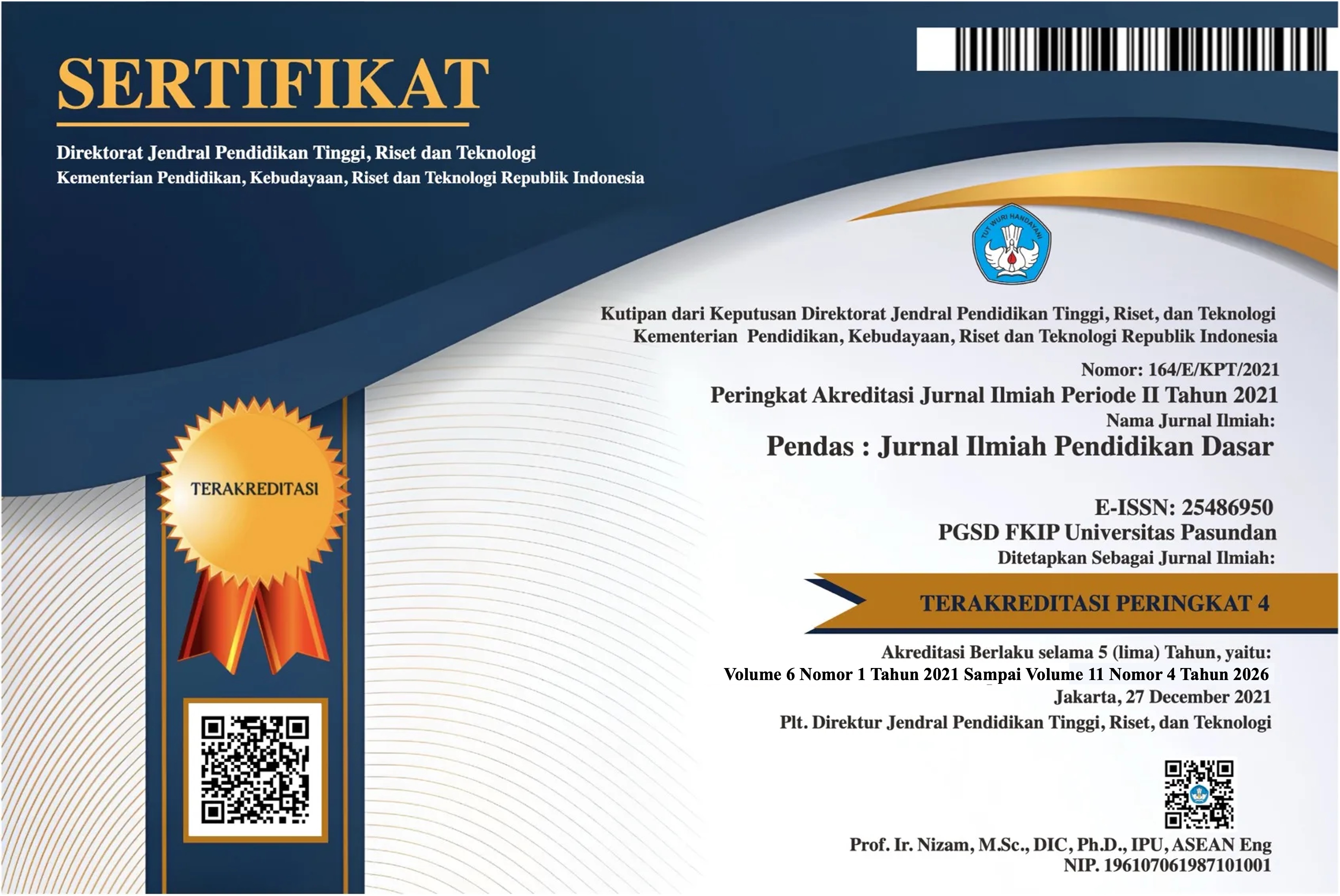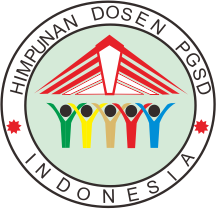PENERAPAN MODEL PEMBELAJARAN KOOPERATIF MAKE A MATCH DALAM MENINGKATKAN HASIL BELAJAR SISWA PADA MATA PELAJARAN PENDIDIKAN PANCASILA DI MI ISLAMIYAH 01 KOTA MADIUN
DOI:
https://doi.org/10.23969/jp.v10i3.29657Keywords:
learning outcomes, make a match, cooperative learningAbstract
This study is based on observations conducted at MI Islamiyah 01 in Madiun City. These observations show that the learning outcomes of fourth-grade students at MI Islamiyah 01 in Madiun City in the subject of Pancasila Education, particularly in the material on the History of the Formulation of Pancasila, are still relatively low or can be said to be far below the minimum passing grade (KKM). A total of 5 out of 24 students obtained scores below the minimum passing grade, or around 27.36% of students were still below the predetermined minimum passing grade. One of the causes was the use of a conventional learning model that did not sufficiently involve student activity and interaction. One effective step that can be taken is to apply the Make a Match cooperative learning model in teaching. This study aims to determine the application of the Make a Match cooperative learning model in improving student learning outcomes in Pancasila Education in class IVC of MI Islamiyah 01 in Madiun City in the 2024/2025 academic year. This study uses the Classroom Action Research (CAR) method with stages of planning, implementation, observation, and reflection consisting of two cycles. This study was applied to 24 students in class IVC, consisting of 11 male students and 13 female students. The learning outcomes obtained during the implementation of the classroom action showed an increase from the pre-cycle to cycle II. The completion rate was 27.36% in the pre-cycle, 65.01% in cycle I, and 100% in cycle II. Based on the research conducted, the Make a Match cooperative learning model can improve the learning outcomes of fourth-grade students at MI Islamiyah 01 in Madiun City.
Downloads
References
Azizah, A. (2021). Pentingnya penelitian tindakan kelas bagi guru dalam pembelajaran. Auladuna: Jurnal Prodi Pendidikan Guru Madrasah Ibtidaiyah, 3(1), 15-22.
Eka Permana, W., Sulianto, J., & Widyaningrum, Keefektifan Pembelajaran A.(2016). Model Quantum Teaching Terhadap Kreatifitas Dan Hasil Belajar Matematika Kelas Iii Sd. 3(2), 148–153
Hartono, R. (2020). Ragam Model Mengajar yang Mudah Diterima Murid. DIVA Press.
Manizar, E. (2015). Peran Guru sebagai Motivator Belajar. Tadrib: dalam Jurnal Pendidikan Agama Islam, 1 (2),171-188.
Mawardi, M. (2018). Designing the Implementation of Model and Instructional Media.Scholaria: Jurnal Pendidikan dan Kebudayaan,8(1), 26-40.
Ramadani, Angely Noviana, D. (2023). Pengaruh Penggunaan Media Pembelajaran Terhadap Dunia Pendidikan (Studi Literatur). Jurnal Pendidikan Dasar Dan Sosial Humaniora, 2(6), 342–346.
Rimbarizki, Rimbun. “Penerapan 2017. Pembelajaran Daring Kombinasi Dalam Meningkatkan Motivasi Belajar Peserta Didik Paket C Vokasi Di Pusat Kegiatan Belajar Masyarakat (Pkbm) Pioneer Karanganyar.” Unesa6(2):1–12.
Rusman. (2016). Pembelajaran Mengembangkan Profesionalisme J+Plus Model-model Guru. Bandung: PT Mulia Mandiri Press.
Saidurrahman. (2018). Pendidikan Kewarganegaraan NKRI Harga Mati. Jakarta: KENCANA.
Savira, A.N., Rahma, F. Muchammad, R.Z., & M. E. S. (2018). Peningkatan Minat Belajar Siswa dengan Menggunakan Metode Ceramah Interaktif. Jurnal Program Studi Tadris Matematika, 1(1), 43–56.
Syah, Muhibbin. (2017). Psikologi Belajar. Depok : Rajawali Pers
Downloads
Published
Issue
Section
License
Copyright (c) 2025 Pendas : Jurnal Ilmiah Pendidikan Dasar

This work is licensed under a Creative Commons Attribution 4.0 International License.



















